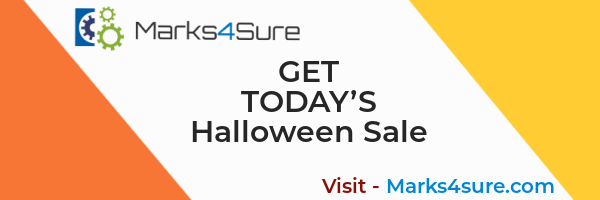A clinically impactful patient engagement solution must go beyond communication. It should use real-time data, AI-driven insights, and seamless care coordination to reduce readmissions, improve adherence, and support proactive care. The right platform aligns with value-based care goals by making engagement smarter, timely, and outcome-focused.
Healthcare organizations in the present day need to be more than a simple patient portal that is created to help deal with the complexities of care delivery nowadays. Any Patient Engagement Solution that achieves clinical impact should include patient-centered analytics, extensive care coordination, as well as real-time monitoring capabilities. The platforms provide a base for value-based care models where providers use them to manage patient populations effectively to achieve better outcomes and at lower costs.
What Defines Clinical Impact in Patient Engagement?
Improvements in patient outcomes, treatment quality, and operational efficiency that may be measured are known as clinical impact. A solution demonstrates clinical impact through:
- Lower 30-Day Readmissions: Reduces costly hospital returns through proactive monitoring and timely intervention strategies.
- Better Medication Adherence: Supports patients with reminders, counseling, and follow-up for improved compliance and outcomes.
- Enhanced Care Coordination: Creates connected workflows between providers, reducing duplication and communication gaps.
- Fewer Emergency Visits: Detects risks early and manages conditions proactively to prevent unnecessary ER utilization.
- Stronger Chronic Care Management: Enables continuous engagement for long-term conditions, improving quality scores and reducing costs.
Instead of just facilitating communication, healthcare organizations require solutions that have a real impact on patient health outcomes.
How Does Real-Time Data Integration Transform Patient Care?
Multiple sources of patient data are combined into a single clinical picture through real-time data integration. Patient Engagement Software captures data from:
- Electronic Health Records (EHRs): Consolidate patient history, diagnoses, and treatment data for quick, informed decision-making across the care team.
- Remote Monitoring Devices: Continuously collect vital signs and health metrics from wearable and home-based devices to detect early warning signs.
- Patient-Reported Outcomes: Incorporates feedback on symptoms, lifestyle habits, and recovery progress to personalize care plans effectively.
- Laboratory Systems: Integrates lab test results instantly, ensuring timely clinical decisions and avoiding delays in treatment.
- Pharmacy Networks: Tracks medication fills, adherence patterns, and prescription changes to prevent medication errors and ensure compliance.
This integration enables care teams to:
- Identify At-Risk Patients Early: Detect potential complications through real-time insights before they escalate into serious health events.
- Adjust Treatment Plans Dynamically: Modify medications, therapies, or follow-up schedules based on the latest health data, improving responsiveness.
- Coordinate Care Across Providers: Share updated patient information among specialists, primary care, and support teams for seamless continuity of care.
- Track Progress Toward Health Goals: Monitor outcomes like blood pressure control or glucose levels to ensure patients stay on track with care plans.
The outcome is proactive care delivery, which avoids negative outcomes instead of reacting to them.
What Role Does AI Play in Clinical Decision Support?
Patient data is converted into useful healthcare insights using artificial intelligence. Modern Patient Engagement Software utilizes machine learning to:
Predictive Analytics:
- Identify patients at risk for readmission
- Predict medication non-adherence patterns
- Flag potential care gaps
- Forecast disease progression
Automated Workflows:
- Critical Alerts: Sends instant notifications when patient vitals or health data show signs of risk, allowing quick intervention.
- Follow-Up Scheduling: Books follow-up appointments automatically based on patient condition and care pathways, reducing missed visits.
- Personalized Reminders: Sends custom reminders for medications, lifestyle steps, and preventive screenings to keep patients on track.
- Priority Outreach: Flags high-risk or overdue patients so care teams can focus on those needing urgent attention first.
AI-powered systems provide thorough patient monitoring while empowering physicians to make well-informed decisions.
How Do Multi-Channel Communication Features Improve Outcomes?
Diverse communication channels that take patient preferences into account are necessary for effective patient involvement. Clinical impact comes from communication systems that offer:
Diverse Communication Channels:
- Secure messaging within patient portals
- SMS text reminders and alerts
- Video telehealth consultations
- Voice calls with care coordinators
- Mobile app notifications
Personalized Messaging
It delivers tailored health education materials, medication reminders aligned with patient schedules, and appointment confirmations with clear preparation steps. It also includes post-discharge follow-up communications to ensure continuity of care and prevent readmissions.
Multi-channel approaches increase patient response rates and improve adherence to treatment protocols.
What Makes Care Coordination Seamless Across Providers?
Fragmented care results in poor outcomes and increased costs. Clinically impactful solutions provide:
Unified Care Team Communication:
- Shared patient records across specialties
- Real-time updates on patient status
- Coordinated discharge planning
- Seamless referral management
Care Transition Management:
Effective transitions are supported through automated handoff protocols, standardized care plan documentation, and coordinated post-acute follow-ups. Medication reconciliation tracking ensures patients have accurate prescriptions during every stage, reducing risks and improving continuity of care.
These features ensure continuity of care regardless of where patients receive treatment.
How Do Analytics Drive Measurable Clinical Improvements?
Data without insights provides limited value. An effective Digital Health Platform offers:
Performance Metrics:
- Patient satisfaction scores
- Clinical quality indicators
- Cost per episode measurements
- Provider efficiency metrics
Outcome Tracking:
- Readmission rates by condition
- Medication adherence patterns
- Care gap closure rates
- Patient activation levels
| Metric | Industry Baseline | High-Performing Organizations |
| 30-day readmission rate | 15.3% | 8.7% |
| Medication adherence | 67% | 89% |
| Patient satisfaction | 72% | 94% |
| Care coordination efficiency | 54% | 87% |
Note: Regular analytics evaluation helps to improve patient engagement approaches.
Essential Security and Compliance Features
Healthcare data requires stringent security standards. Clinically impactful solutions must include:
Data Protection:
- HIPAA Compliance: Ensures all patient data handling meets strict federal guidelines to maintain privacy and avoid legal risks.
- End-to-End Encryption: Protects sensitive health information during transfer and storage, minimizing exposure to cyber threats.
- Multi-Factor Authentication: Adds an extra layer of security, requiring multiple identity checks to prevent unauthorized system access.
- Regular Security Audits: Conducts ongoing system reviews to identify vulnerabilities and maintain a strong security posture.
Compliance Monitoring:
- Automated compliance reporting
- Audit trail documentation
- Risk assessment tools
- Incident response protocols
Security breaches may also lead to loss of patient trust and an immense regulatory fine.
Mobile-First Solutions For Enhanced Patient Engagement
Patients would like to have their health information easily available. Mobile-optimized platforms provide:
Patient Self-Service:
- Appointment scheduling
- Test result access
- Medication management
- Care plan tracking
Remote Monitoring:
Real-time remote monitoring allows symptom tracking, vital sign recording, and confirmation of medication adherence. Combined with direct provider communication, these features help identify issues early and maintain patient engagement between visits.
Mobile accessibility increases patient participation in their care management.
What Integration Capabilities Are Critical for Success?
Standalone systems create workflow inefficiencies. Successful Digital Health Platforms integrate with:
Core Healthcare Systems:
- EHR Integration: Connects seamlessly with electronic health records for accurate patient data and improved clinical workflows.
- Practice Management Systems: Aligns administrative functions such as scheduling and billing with clinical data for streamlined operations.
- Laboratory Systems: Links lab results to patient profiles for faster diagnoses and treatment decisions without manual updates.
- Pharmacy Platforms: Tracks prescription details and adherence to reduce medication errors and improve patient safety.
Third-Party Applications:
- Telehealth Platforms: Integrates virtual visit capabilities to expand access and improve care delivery outside clinical settings.
- Remote Monitoring Devices: Captures patient vitals and health metrics in real-time, feeding data back to care teams for proactive action.
- Health Information Exchanges: Facilitate secure data sharing across networks, enabling providers to coordinate care efficiently.
- Quality Reporting Systems: Supports compliance by automatically submitting data to meet regulatory and performance benchmarks.
Integration eases the administration burden as it enhances the accuracy of data.
How Do Automated Workflows Improve Care Quality?
Manual processes often lead to errors and inefficiencies.
- Automated workflows streamline care delivery by applying standardized assessment protocols, triggering timely interventions, and ensuring systematic follow-ups with quality measure tracking.
- Administrative tasks such as appointment reminders, care plan updates, and documentation are automated to reduce staff burden.
The automation system enables clinical staff to focus on delivering direct patient care.
What Training and Support Features Drive Adoption?
The efficiency of technology relies on the skill level of the user. Successful implementations include:
User Training Programs:
- Role-specific training modules
- Interactive learning resources
- Ongoing education support
- Performance feedback systems
Technical Support:
- 24/7 help desk availability
- System troubleshooting guides
- Regular software updates
- User community forums
Proper training ensures maximum return on technology investments.
Bottom Line
Evidence-based design and modern technology are combined in clinically relevant patient engagement solutions to produce quantifiable gains in patient outcomes and care quality. The best platforms combine extensive care coordination features, smooth communication channels, and AI-powered analytics in safe, mobile-friendly settings.
Choosing solutions that support corporate objectives and offer the adaptability to change with changing healthcare needs is essential to success. Readmissions are decreased, patient satisfaction is raised, and operational efficiency is increased for organizations that invest in complete patient interaction platforms.
Transform Your Patient Engagement Strategy
The all-inclusive platform for patient engagement and care coordination that your company requires to thrive in value-based care is provided by Persivia CareSpace®. Healthcare organizations have saved $17 million because of our AI-driven solution, which has also improved treatment quality during full episodes and reduced readmissions by 15%.
Advanced analytics, smooth EHR connectivity, and multi-channel communication capabilities are all combined by CareSpace® to provide your company with quantifiable clinical benefits.






